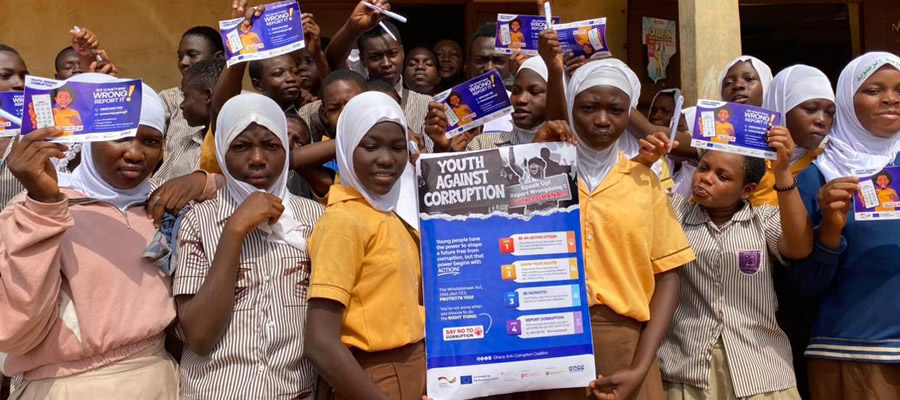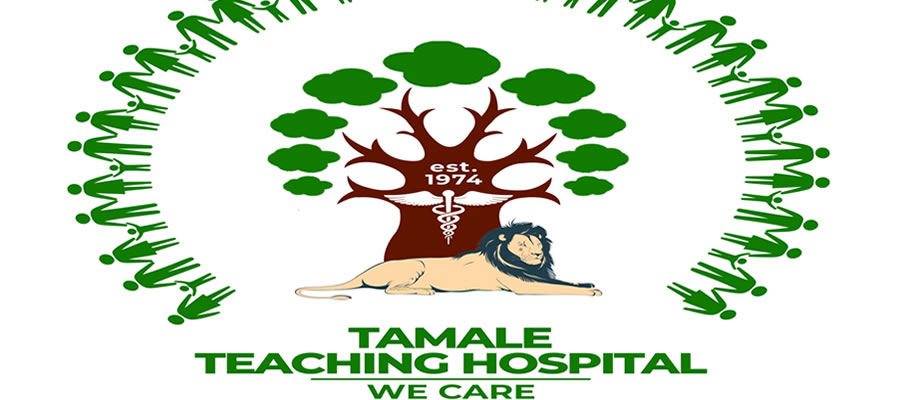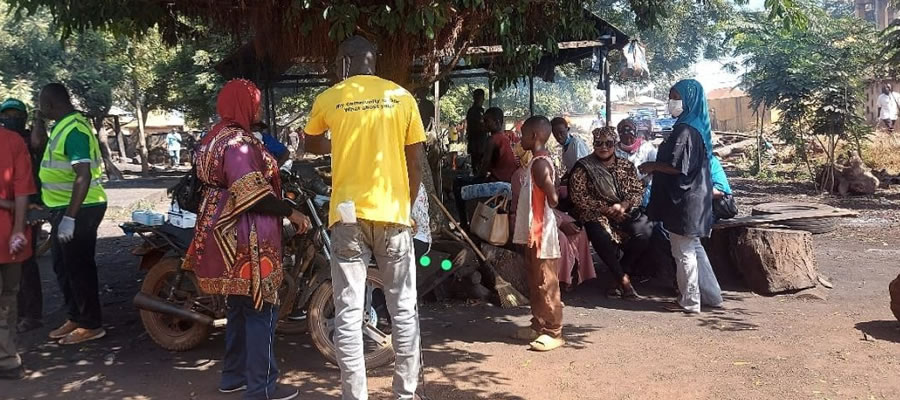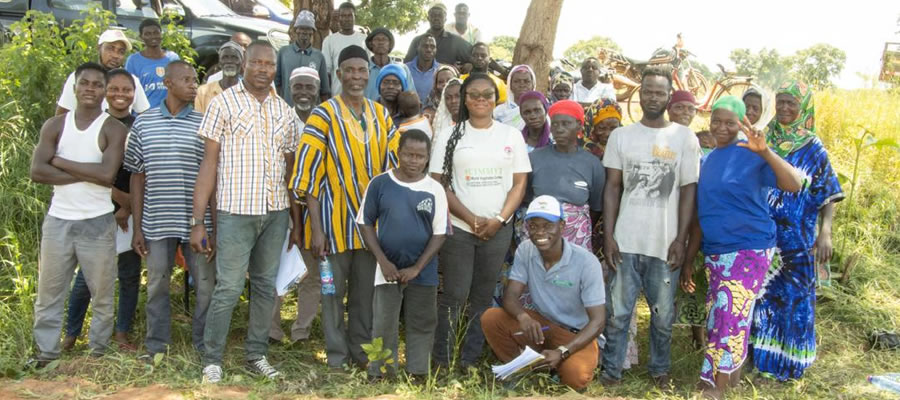
Introduction
The method by which people organize themselves around productive activity and the stratification processes that are associated with differentiation of labour are fundamental characteristics of a society. This section focuses on several dimensions of work and the rewards of work (i.e., income and wealth). Productive capacity in any country and economic performance is mainly measured by the size of its productive workforce. The legal working age in Ghana is 15 years.
However, it needs to be emphasized that individuals below this age are often found in various areas engaging in economic activity. There is evidence that children younger than 15 years of age engage in a variety of economic enterprises.
This section analyzes economic characteristics of the population 15 years and older. It is recognized, however, that a substantial proportion of the country?s potential workforce may be pursuing a variety of non-economic activities, such as going to school. Such persons are excluded from the active workforce, and are referred to as economically not active.
There is a second group which includes individuals who are regarded as economically active (either employed or not working at the time of the census). They include individuals with jobs who were on leave, and those currently unemployed, but actively seeking employment.
The Economic Activity Status of the Population
Table 9.1 shows the economic activity status of the population 15 years and older by district. For the economically active population in the Northern region, Tamale has the highest proportion (14.3%) and Chereponi has the lowest (2.0%).
All other districts show some variation in the proportions of between 8 percent and 2 percent. This phenomenon is as a result of Tamale having the greatest population density as well as being the most urbanised district where economic opportunities abound perhaps more than in any other district in the region.
For the economically not active population, Tamale again has the highest proportion (25.5%) and Chereponi has the lowest proportion (1.8%). Apart from West Gonja, East Gonja, Nanumba North, Tamale and Mamprusi West, who have a larger proportion of persons 15 years and older who are not economically active, all other districts have higher proportions of economically active population than those that are not economically active.
Economic activity Status of Population 15 and Older
by Locality and District
The data in Table 9.2 show the economic activity status of persons 15 years and older by district and locality. In all the districts, the proportion of the economically active population that is employed in rural areas is higher than in urban areas.
Except for East Gonja (49.1%), the employed population in urban areas of the districts is more than 50 percent. The highly agrarian economy in rural areas might be the reason for the high proportion of persons who are employed there compared with the economically active who are employed in urban areas.
Occupation of Employed Persons 15 years and Older by District
The major occupation of employed persons in the region is skilled agricultural, forestry and fishery workers who constitute almost 74.0 percent, followed by craft and related workers, at 8.1 percent (Table 9.3). Clerical support workers and service and sales workers form a minimal proportion (0.4%) each. There are variations in the major occupation in the districts.
The four dominant occupations in Bole District are agriculture, forestry and fishery (59.6%), services and sales workers (13.1%), plant machine operators and assemblers (11.2%) and craft and related workers (8.2%). Agriculture, forestry and fishery is the major occupation in all districts except Tamale which, due to its highly urbanized nature, has the lowest proportion (19.1%).
The dominant occupations in Tamale Metropolis are services and sales workers (30.7%) and craft and related trades workers (21.7%), followed by agriculture, then professionals (9.3%) and elementary occupations (7.7%).
Industry of Employed Persons 15 years and Older
Industry refers to the type of services offered or product produced by an institution or company. Table 9.4 shows that iin the Northern region, the major industry in which employed persons work is agriculture, forestry and fishery (73.5%). Wholesale and retail; repair of motor vehicles and motorcycles forms 9.2 percent followed by manufacturing (6.2%) and accommodation and food service activities (2.4%).
Agriculture, forestry and fishery remains the major industry in most of the districts. The situation is different in Tamale Metropolis where wwholesale and retail; repair of motor vehicles and motorcycles (30.4%) is the major industry, followed by agriculture, forestry and fishery (19.6%), manufacturing (13.1%), education (7.6%) and accommodation and food service activities (7.1%). All five industries in addition to transportation and storage, information and communication constitute the highest proportions in the region.
Employment Status
In the 2010 census, employment status refers to the status of a person in the establishment where he/she currently works or previously worked. The employment status categories identified include employee, self-employed without employees, self-employed with employees, casual worker, contributing family worker, apprentice, and domestic employee (house help).
The option “other” refers to persons who could not be classified in any of the above categories. At regional level, 58.6 percent of the economically active population is self-employed without employees (Table 9.5) while contributing family workers constitute 28.5 percent of the employed population.
The proportion of the self-employed with employees is less than 3.3 percent at regional level. The highest proportion of the self-employed without employees is found in Saboba (67.0%), while the smallest proportion is in Sawla-Tuna-Kalba (44.9%). In all the districts together, the two self-employed categories account for 61.9 percent of the working population.
Except for the low figure for Tamale Metropolis (5.9%), in the rest of the districts the proportion of contributing family workers ranges from 19.9 percent in Nanumba South to 48.2 percent in Sawla-Tuna-Kalba.
Employment Sector
Table 9.6 shows the sector of employment of the employed population and persons who have worked before and are seeking work. The employment sectors are in five categories: public, private formal, private informal, semi-public/parastatal and NGOs (local and international).
An overwhelming proportion (94.5%) of employed persons in the region is in the private informal sector while less than 4.0 percent work in the public sector. The pattern is same for all the districts. Persons employed in the public sector in Tamale Metropolis are in the highest proportion (13.0%) compared to the rest of the districts. In all the districts, the private informal sector is the highest sector of employment
Date Created : 11/28/2017 3:41:13 AM












 facebook
facebook
 twitter
twitter
 Youtube
Youtube
 +233 593 831 280
+233 593 831 280 0800 430 430
0800 430 430 GPS: GE-231-4383
GPS: GE-231-4383 info@ghanadistricts.com
info@ghanadistricts.com Box GP1044, Accra, Ghana
Box GP1044, Accra, Ghana